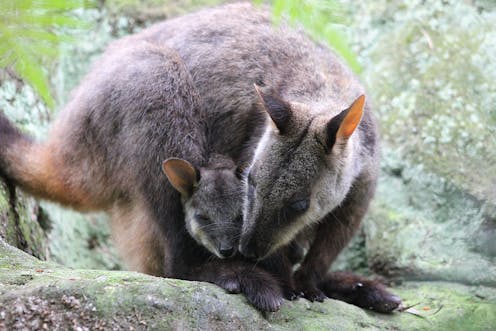What Australia can learn from Victoria's shocking biodiversity record
- Written by Geoffrey Wescott, Honorary Research Fellow, School of Life and Environmental Sciences, Deakin University

Victoria is struggling with biodiversity conservation, according to a State of the Environment report tabled in parliament this week. While the scorecard is bleak – not one of the state’s key biodiversity indicators ranks as “good” – the report itself gives some hope.
For the first time the Commissioner for Environmental Sustainability, who prepared the report, offers proactive recommendations to the Victorian government for improving its performance, and has linked these goals to international sustainability targets. It’s an comprehensive and ambitious effort, and offers some good lessons to the rest of Australia.
Read more: Australia among the world's worst on biodiversity conservation
Alarming results
Victoria is the most densely populated state in Australia, the most cleared of native vegetation, and has the smallest percentage of public land.
The State of the Environment report uses a traffic light method to summarise the status, trend and data quality of 170 indicators spread over 12 scientific assessment areas (everything from general air and water quality to specific environments such as marine and coasts, plus issues such as waste and energy).
The indicators paint a picture that does not look good for biodiversity. None of these indicators are rated “good”; seven are “fair”, 21 “poor”, and seven “unknown”. In terms of trends, just one is improving, seven are stable, and 18 are deteriorating (nine are unclear).
National park declarations have slowed substantially on land in recent years – the first Andrews government (2014-18) was the first Victorian government in a quarter of a century not to increase national parks. Not a single additional marine area has been protected since 2002.
In contrast, conservation on private land is fair and trending upward according to the report card (probably largely due to the efforts of Trust for Nature). A substantial cash injection for the trust from Victoria’s rolling fund would likely see outsized results, although this is not a specific recommendation in the report.
The reports offers two critical recommendations for improving biodiversity:
increase private land conservation and invest in local government capability to enforce existing protective guidelines, and
appoint a Chief Biodiversity Scientist to counsel the Secretary and Environment Minister to improve the impact of biodiversity research.
Creating a Chief Biodiversity Scientist is a good starting point for an area that has received decreasing effort, over the past decade in particular. However, it must be only the first step in raising the lowly position of biodiversity conservation, not only in the environment department but across the entire government.
Beyond passive reporting
This years report moves beyond simply relaying data in two ways: first, with 20 specific recommendations to the government, and secondly by using the United Nation’s framework of environmental accounting to tie the report to the global Sustainable Development Goals.
The report claims this is the first attempt to apply the UN’s Sustainable Development Goals to a sub-national environmental report. Given the number of federated nations around the world (the United States, Brazil and Canada, for a start), putting the spotlight on state or provincial environmental responsibilities is a significant and laudable step.
In the more immediate future, the report gives the Victorian government 20 recommendations linked to the Sustainable Development Goals, across a range of categories: Traditional Owner leadership, climate change, air and water quality, land, forests, fire, marine and coastal environments, water resources, waste and resource recovery, energy, transport, and “megatrends”.
The 20 recommendations are solidly based on the findings across the 12 assessment areas. These show that only 11% of status indicators are “good”, whereas 32% are “poor”, with the trend demonstrating only 10% are improving, 30% stable and 30% deteriorating.
Read more: Why biodiversity is key to our survival
While the State of the Environment report naturally focuses on Victoria, there are plenty of lessons and ideas here for the rest of the country.
Now the onus is firmly on the self-proclaimed “most progressive government in Australia” to act.
Authors: Geoffrey Wescott, Honorary Research Fellow, School of Life and Environmental Sciences, Deakin University





